SEC Overrides ExxonMobil Efforts to Stifle Shareholder Activism on Climate
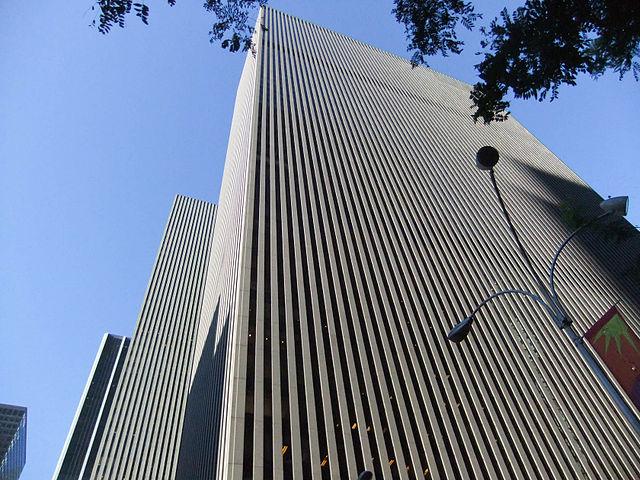

It is widely known that the wheels of justice -- and of institutional change -- turn slowly, especially when they turn against the well-established forces of the status quo.
The fact is: Whenever laws or regulations are proposed that could potentially cost businesses money, those businesses have advocates that can effectively fight those laws. In the past, that advocacy cost money, which is why the status quo so often won out. On the other hand, when the burden -- in the form of either direct or indirect costs, such as pollution -- is passed along to the general public, few if any advocates could afford to raise awareness about the issue. That simple fact explains a lot about the state of our world today.
But today, with the advent of the Internet, that equation is changing dramatically. The wheels are turning a little more quickly now. One example happened last week when the Securities and Exchange Commission (SEC) ruled in favor of several important resolutions dealing with climate change, brought forth by ExxonMobil shareholders that the company tried to block.
One resolution, supported by the Oakland-based nonprofit advocacy group As You Sow, requested that the company report its energy resources in terms of BTUs, a scientifically-recognized measurement of energy, rather than in terms of “barrels of oil equivalent.” What this does is level the playing field by treating all forms of energy, including renewables, as essentially interchangeable.
This seemingly subtle provision could set the stage for Exxon to become a diversified energy company. Here’s how: As the advocacy group points out in this filing, the change in wording is not merely symbolic. A key metric used today is the “reserve replacement ratio,” a measure that is often tied to executive compensation. As written, energy consumed must be replaced by equivalent barrels of oil. Cleaner sources are not included as acceptable alternatives. Changing this language to allow any form of energy to replace fossil fuels consumed (without compromising a CEO’s bonus) could be a game-changer.
Danielle Fugere, As You Sow's president and chief counsel, pleased with the SEC ruling, said: "Exxon must allow shareholders to vote on this first step on the path toward clean energy. Broad support will give management the latitude to develop a diverse and profitable low-carbon business plan, while maintaining 100 percent BTU energy replacements."
As You Sow also filed a petition with the SEC to change this metric for the entire industry.
Another resolution, put forth by the Tri-State Coalition for Responsible Investment, asks the company to take moral responsibility for global warming. The resolution by this group, representing nearly 40 Roman Catholic pension fund investor groups, says: “ExxonMobil claims that its energy production responds to a 'moral imperative' to meet growing energy demand and eradicate poverty, but this does not offset the necessity to mitigate climate change or the moral imperative to limit warming to 2 degrees Celsius."
A third resolution, by the Province of St. Joseph of the Capuchin Order of friars, asks stockholders to vote on naming someone with climate change expertise to Exxon's board.
Image credit: Wikimedia Commons
UNICEF Gamifies Giving Water, S’well Makes Water Bottles Fashionable


You don’t have to have a superpower, wear a cape or risk your life to save someone. In fact, the UNICEF U.S. Fund has created a new way for you to save a life, and all you have to do is not use your phone. What? That sounds like a superpower to me.
Welcome to World Water Month. Here’s how it works. For the month of March, for every 5 minutes you don’t use your phone, a child gets clean water for one day. This opportunity is brought to you courtesy of water bottle company S’well and Giorgio Armani Fragrances. Never has a fundraiser tasted so good and smelled so sweet. Together, they will donate $175,000 if you can give up something you don’t think you can live without, for something people really can’t live without.
A shocking 663 million people do not have safe, clean water to drink. That’s over twice the population of the United States. But, even losing one child due to lack of access to water would be one child too many, said Caryl Stern, president and CEO of the U.S. Fund for UNICEF. She believes access to water should be a basic human right. So far in this campaign, 3 million days of clean water have been donated.
To join the friendly competition, go here on your cell phone. Next, set your phone down and start the game. While you wait, the site will tell you fun stats. For example, today people have helped kids instead of viewing 37,000 cat photos. California is winning for having the most players. At this very moment, 27 people are setting down their phones to give children water. The record time today was 621 minutes and the all-time record is 71,000 minutes, or almost 50 days. Wow.
Giving water is a great way to celebrate World Water Month. It's also a great time to consider our personal use of water.
If you’re not familiar with S’well, you’re about to be. Not only is the company amazing for donating water to kids in need, but it’s also amazing because it’s saving the world (and clean water) through fashion. Yes, fashion. Expensive purses and watches can move over and make room for this new glamorous accessory… the water bottle. Oh, really? Yes, S’well is selling stylish water bottles at high-end retail stores such as Saks Fifth Avenue, Nordstrom and Neiman Marcus.
In an interview with Daily Worth, S'well founder Sarah Kauss explained her strategy.
Gamifying giving water and making it fashionable have been successful innovative strategies. In fact, UNICEF has had such good luck gamifying social change that it has another tech game called Kid Power rolling out.
Kids will wear power bands that calculate their steps and then be challenged to walk the minimum number of daily steps, about 12,000. “For every 2,400 steps they walk, they earn a kid power point and it lights up, it buzzes and it’s very exciting,” Caryl Stern of UNICEF said. For every 10 kid power points they earn, a food packet is given to a malnourished child, thanks to donations from Target and Disney.
One in four American children today is under-active, and one in four children around the world is malnourished to the point of starvation. Stern said this year over 100,000 children will participate. The goal is to have a million children in the program by 2017. “You get active. You get healthy. You save a life.”
If saving lives makes someone a superhero, then you can be a superhero. All you have to do is set your phone down for a few minutes, go for a walk and drink from a S’well bottle. Saving the world just became fun and fashionable.
Photo credits: 1) S'well 2) UNICEF's Tap 3) S'well and 4) Target
Broccoli City Turns Hip-Hop Lovers into Tree-Huggers
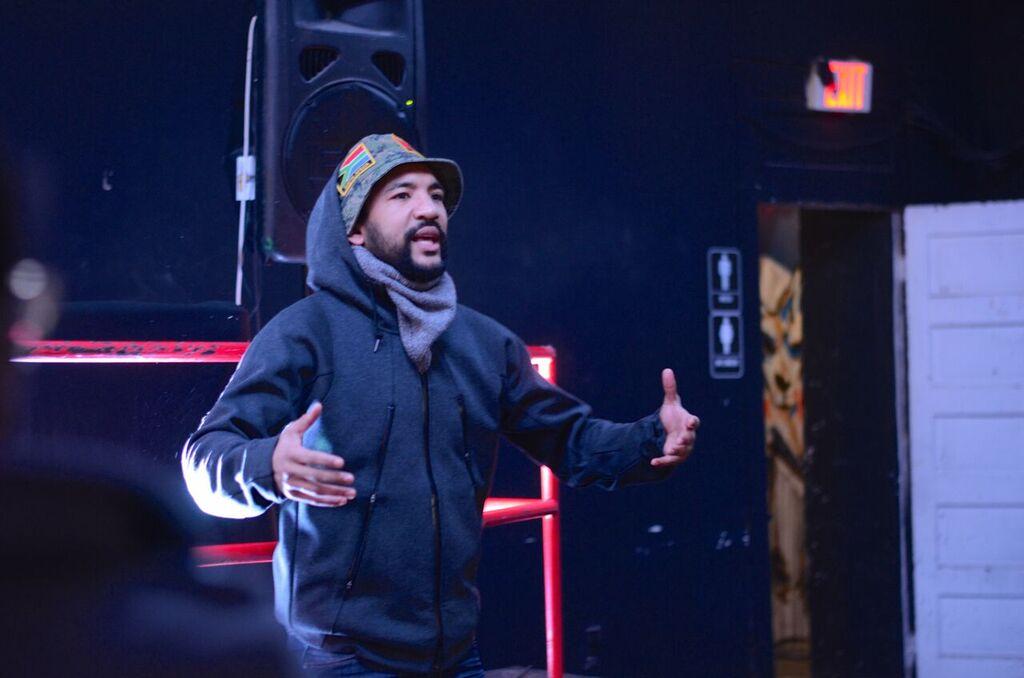

Broccoli City is on a mission to turn hip-hop lovers into tree-huggers. The wildly successful social enterprise is leveraging its community of over 20,000 urban millennials around the world to promote healthy eating, environmental sustainability and civic engagement.
Its annual festival, which takes place on April 30 of this year, features live performances by Future and Jhene Aiko, as well as art, yoga, healthy, organic and vegan food, and eco-friendly vendors. However, the most impressive thing that Broccoli City offers is an opportunity for young people to engage with their communities through sustainable, high-impact, civic engagement.
Through the Power of One campaign, festival attendees are given the opportunity to work with local organizations, city agencies and local/national brands to help build, feed, clean up, grow and refresh their communities. Those who fully participate in a community service action are awarded a free pass to attend the festival.
“It’s really about building social capital and inspiring people to be more active in their communities,” explained Darryl Perkins (above), Broccoli City’s director of community engagement. “We are leveraging what we do with the festival to build a healthier environment and healthier people."
He continued: "We are all sharing this one little blue planet. If we don’t take care of it, in a few generations our grandchildren won’t have a place to live.”
The trick is in making sustainability cool, or as I like to say, “making green the new gangsta." “We have to make it seem like everybody is doing it," Perkins told 3p. “We have to make it cool to be active and engaged, to be conscious about our environment and what we put into our bodies. That’s the way we shift the culture. We have to set the trend.”
Through the Power of One, Broccoli City will activate more than 1,000 volunteers before this year's festival. They're building community gardens, planting trees, cleaning up public spaces, preparing meals for the homeless and much more. “We’ve created a premium for doing work in the community,” Perkins told us. “Of course, the incentive helps, but beyond that people want to be engaged and do stuff.”
The focus is on high-impact, low-infrastructure programs that can move a lot of people quickly and efficiently. For example, the organization partnered with #HashtagLunchBag to prepare and distribute over 1,000 meals to hungry and homeless people in Washington D.C.
Volunteers also worked with the D.C. Central Kitchen to transform over 1,000 pounds of donated food into 1,500 balanced meals. The meals were then delivered to homeless shelters, transitional homes and nonprofit organizations, saving these organizations money and nourishing people who need it the most.
Volunteers worked alongside Casey Trees to restore Washington D.C’s famous tree canopy. They also banned together to clean up and refresh local community spaces and prepare community gardens for spring planting. Volunteers helped create healthy shorelines and trails by removing litter, debris and trash from local lands along the Anacostia River. They also participated in a public art project at a local park.
All volunteer events reach capacity within hours of being posted on the Broccoli City website and are met with “hella enthusiasm,” said Perkins. “We’re bringing a fresh, new energy into these spaces and encouraging people to take a more active role in their communities.”
Perkins attributes a great deal of Broccoli City’s success to its innovative business model. As a social enterprise, the team is able to raise enough money during the annual festival to sustain them throughout the year.
“Our generation is dope because we’re breaking the mold of traditional nonprofits,” he explained. “The old way of doing things is no longer effective. Nonprofits spend so much time trying to get funding, and then you can’t do the work you need to do. We want to create new models that spread like wildfire, so people don’t have to choose between doing good work and making money.”
The Broccoli City festival, which started as a yearly Earth Day event, has grown exponentially over the last four years. This year, it's expecting a crowd of up to 12,000. In addition to the festival, the organization has a number of ongoing programs like Healthy Hoods, which provides weekly workshops on healthy living to families in need, and BrocBox, a hydroponic indoor-gardening system housed in repurposed shipping containers.
“The festival is just one piece of what we do,” Perkins told us. When it’s all said and done, it’s just about discovering creative ways to empower young people to make a positive impact within their own lives and their communities. In this case, hip-hop culture is simply the tool.
Image credits: Broccoli City
Cut Out Most of the Meat, Say New Netherlands Dietary Guidelines


Imagine the howling that would occur if the U.S. Department of Agriculture (USDA) issued dietary guidelines that limited the recommended amount of meat intake to less than three ounces a day. The livestock industry, food companies and restaurant chains would be up in arms. The recent revisions in the USDA dietary recommendations for Americans created enough fuss. For example, the suggestion that nutrition advice take environmental considerations into account went no where, so the USDA removed it from the final 2015 recommendations.
More countries, however, are taking science and public health into consideration when they issue nutrition recommendations for their citizens. One of them is the Netherlands, a country where meat-heavy dishes are easy to find on the menu.
The Netherlands Nutrition Center, or Voedingscentrum, is not only recommending that Dutch citizens adopt more of a plant-based diet, but also that they reduce their weekly meat consumption to less than 500 grams (17.6 ounces). That is half of what the USDA suggests in its most recent dietary guidelines. Going a step further, the Dutch agency’s nutritionists recommend limiting red meat consumption to 300 grams (10.6 ounces) a week, in large part because of what it says is the livestock industry’s massive environmental impact.
And because of ongoing concerns about overfishing, Voedingscentrum has also recommended that consumers cut back their weekly seafood intake from two servings to only one a week. As one researcher told National Geographic, one serving a week is enough to counter the risks of coronary disease. That seafood serving should also be an oily fish, a diet recommendation easy to fulfill throughout the Netherlands as herring sandwiches are almost as easy to find as appeltaart and beer.
So, what should people incorporate into their menus instead of animal products? Eggs max out to only two or three a week in these guidelines. Nutritionists suggest at least one serving (135 grams, or 4.6 ounces) of legumes such as beans, kidneys or chickpeas. An occasional small handful of unsalted nuts suffices as a substitute for red meat; in fact, Voedingscentrum suggests cheap peanuts as a more sustainable option than pistachios, chestnuts, walnuts or hazelnuts. (No word on whether the peanut sauce served with French fries, a Dutch favorite, counts.)
Visitors to the agency’s site can sort out their own “plate” or “pyramid” in gauging how they can have a healthful diet, but there are some foods its nutritionists recommend to avoid completely. Those Dutch hot food vending machines, made famous by chains such as FEBO, are a no-no. Processed meats such as sausages and ham are out. The same goes for ground meat or cuts such as spare ribs or bacon. Legumes canned with too much sugar or salt are also to be avoided, and just because something is vegetarian does not mean it is necessarily healthful: Processed veggie burgers or meat substitutes are also excluded from the pyramid.
Although these new Dutch dietary guidelines emphasize buying and eating sustainably, they are also science-based and practical. While lauding the health benefits of vegetables such as kale, kohlrabi, broccoli and beets, the guidelines suggest taking seasonality into account. Canned, frozen or jarred vegetables are given the green light, as their nutritional comment is about the same as fresh options.
As for washing down those meals, the beverage companies did not get very far if they tried to lobby this Dutch government agency. Tap water, coffee or tea are it — fizzy drinks are a non starter. Occasional milk and yogurt are fine, but avoid cheese, say these nutritionists, because it scores high on the environmental impact front.
So, for citizens on this side of the pond where the USDA and its current secretary, Tom Vilsack, are too beholden to Big Food and big meat, the Dutch guidelines offer a different perspective. And considering the obesity and heart disease rate here in the U.S., taking a cue from the Netherlands would certainly not hurt as we try to wade through all the health information by which we are all constantly bombarded.
Image credits: Leon Kaye
Engine Emissions and the Auto Industry
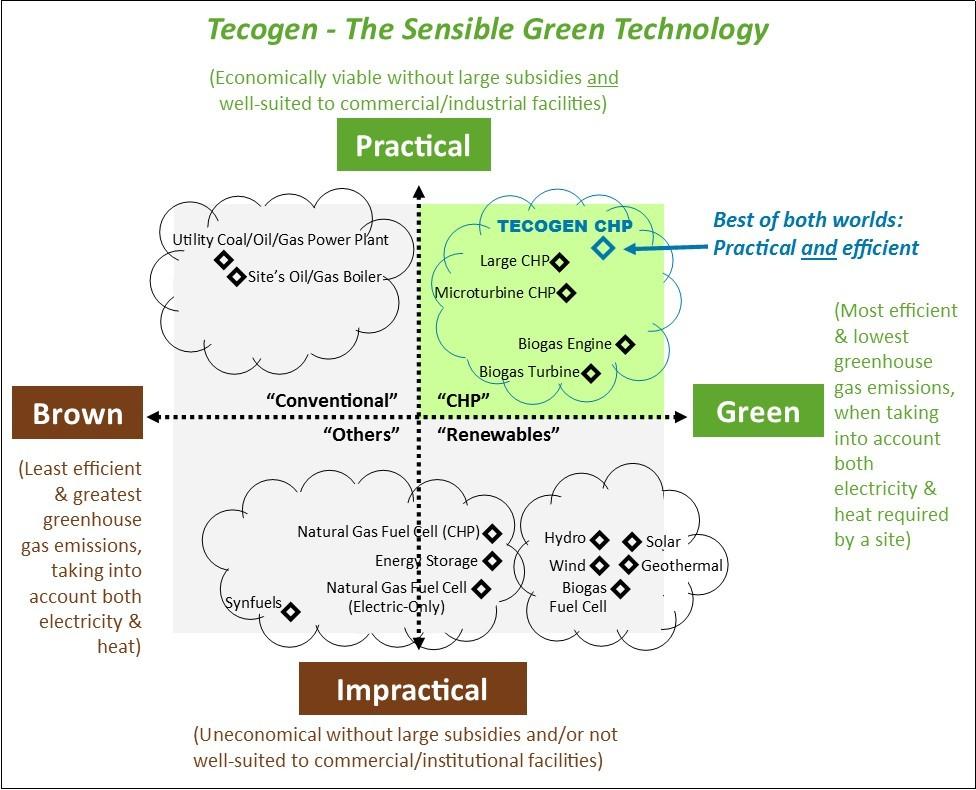

By Bob Panora
Environmental and health concerns drive the need for emissions standards and controls. Despite advancements in solutions for cleaner energy, manufacturers of engines – from stationary to automotive – have historically failed at meeting the mandated guidelines over time and under varying operating conditions. The most recent example of this is “dieselgate,” the term the media coined to describe Volkswagen’s years of cheating on its emissions testing.
As the Environmental Protection Agency (EPA) and other regulators become more stringent with standards testing, manufacturers must adopt viable solutions that meet regulation or else risk hefty fines, negative publicity and plummeting revenue numbers.
Lessons learned from the stationary engine market
Issues with emissions-control compliance for stationary engines first came to light in 2006, when regulators in Southern California conducted unannounced testing of stationary, spark-ignited internal combustion engines and engine-driven equipment. The results were shocking: 56 percent of the engines from the nine manufacturers selected at random were non-compliant. What was even more concerning was the level of pollutants: Nitrogen oxides (NOx) were over the limit by 937 percent and carbon monoxide (CO) was over the limit by 1,780 percent. This hit the industry hard – emissions standards were tightened and temporarily halted the California market for industrial engines.
To address the situation, key stakeholders, including the California Energy Commission and SoCal Gas Co., along with some manufacturers, helped fund R&D for technology to achieve robust compliance with the new emissions standards. The problem with rich-burn natural gas engines is that, when using a three-way catalyst (which everyone does), it is practically impossible to find the precise air-fuel ratio to eliminate both NOx and CO simultaneously. Typical solutions must favor just one over the other.
Since changing the mechanical controls of the engines would be too expensive and invasive, my company, Tecogen, decided to take a closer look at the chemistry of the emissions instead. The company discovered that by simply separating the three-way catalytic reaction into two separate and distinct reactions, it could obtain both very low NOx and very low CO at the same time, without interfering with engine performance.
Thus Tecogen’s Ultera ultra-clean emissions-control technology was formally developed. Ultera has since been successfully tested on a variety of diverse natural gas engines, and in each scenario has proven to consistently reduce the emissions of pollutants contributing to smog (CO and NOx) to near zero levels, on par with those emissions produced by super clean fuel cells. Tecogen engine-driven products are the only stationary natural gas fueled engines that have been permitted to operate in Southern California under the new strict air quality standards.
The automotive engine market
What about emissions-control for auto engines? In addition to Volkswagen’s non-compliance, a report from the Guardian, based on data from Emissions Analytics, showed that diesel cars made by Mercedes-Benz, Honda, Mazda and Mitsubishi emit far more NOx and carbon monoxide in real-life usage than they do in tests. And what about gasoline-powered vehicles? Environmental groups claim that certification tests may understate the true on-road emissions of gasoline-powered automobiles operating under real-world conditions.
Given the above, there’s no question that automakers will increasingly feel pressure from government agencies charged with enforcing emissions standards. Emissions technology needs to improve -- and it has to happen fast before the industry, not to mention the environment, takes a giant step backward.
In the Volkswagen case, EPA rules stipulate a maximum fine of $37,000 per affected car, and employees found to be involved could face up to 10 years in prison. Many car companies would crumble if faced with Volkswagen’s uphill battle.
A potential solution
Learning from its experience in the stationary engine market, Tecogen is exploring how it can apply its patented emissions-control technology to help the transportation industry. The company believes the chemistry will translate effectively for any engine platform that utilizes a rich-burn, spark-ignited internal combustion engine and a conventional catalyst after-treatment system.
Late last year, Tecogen formed a joint venture company, Ultra Emissions Technologies Ltd., with a group of European strategic investors to advance the technology. AVL North America, the leader in the global vehicle testing and verification space, is in the process of performing testing and validation of the Ultera technology for automotive applications. This non-invasive technology could be the cost-effective answer for auto manufacturers that have come under scrutiny for not meeting current emissions standards – let alone even stricter standards that are slated to take effect beginning in 2017.
The emission of pollutants into the environment has always been an issue, but thanks to California regulators, the EPA and high-profile cases such as Volkswagen’s, it has become a recognized problem among a broader audience.
As more and more cars are added to the world and air quality-related illnesses (like asthma) continue to increase in emerging markets like India and China, the problem of emissions control will only take on more urgency. Adhering to strict regulations is changing the manufacturing industry, which now has to re-allocate funds to R&D to explore the problem. Thanks to forward-thinking organizations committed to clean-energy solutions, I’m confident that we’ll find a solution for automakers that will enable them to return to business as usual – manufacturing the cars of the future.
Bob Panora has served as president and COO of Tecogen, Inc since 2000. He had been General Manager of Tecogen's Product Group since 1990 and Manger of Product Development, Engineering Manager, and Operations Manager of the Company since 1984. Over his 27-year tenure with the company, he has been responsible for sales and marketing, engineering, service, and manufacturing.
3p Weekend: Governments, Companies Tackle Water Scarcity
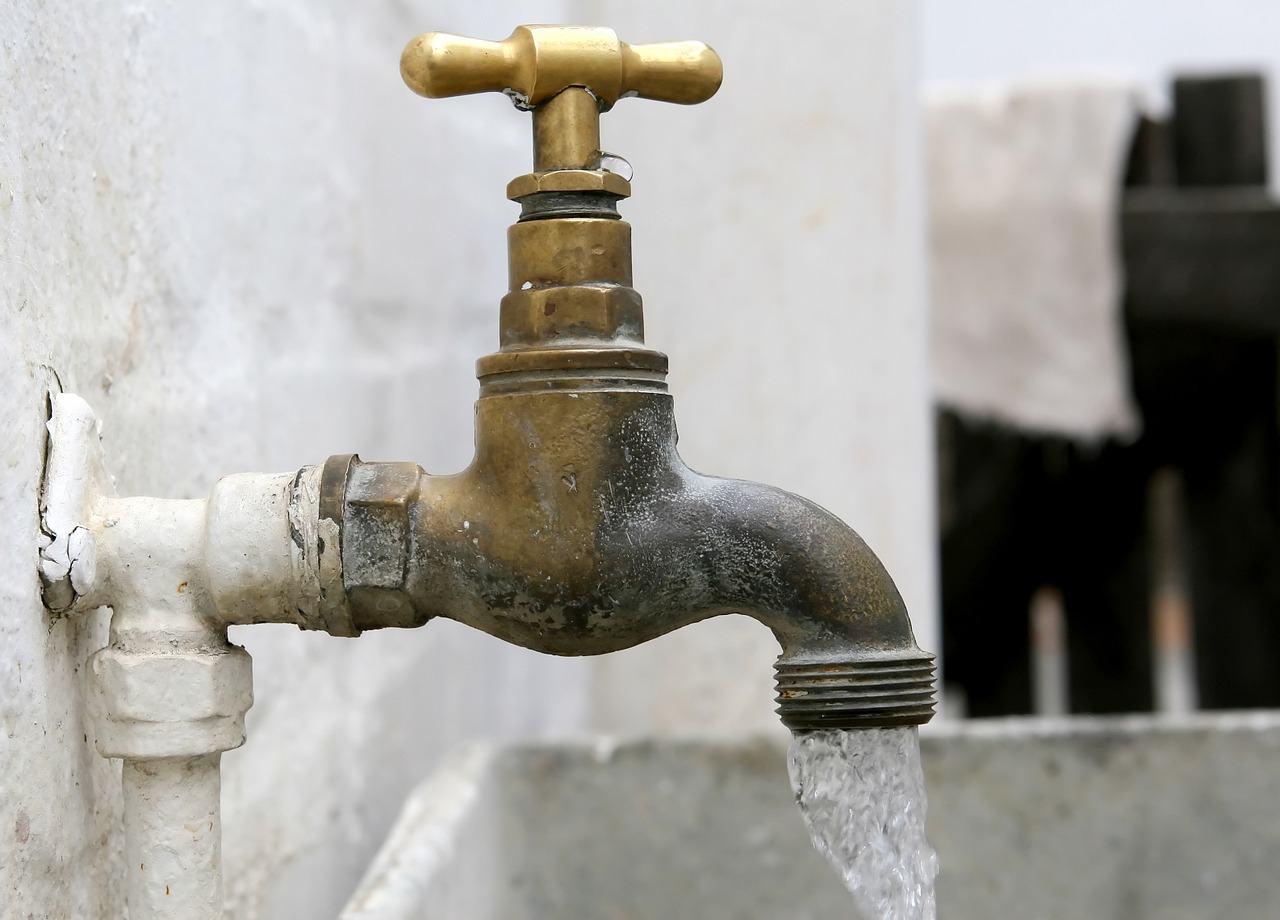

With a busy week behind you and the weekend within reach, there’s no shame in taking things a bit easy on Friday afternoon. With this in mind, every Friday TriplePundit will give you a fun, easy read on a topic you care about. So, take a break from those endless email threads and spend five minutes catching up on the latest trends in sustainability and business.
Tuesday, March 22, marked the 24th annual World Water Day. Governments and companies took the opportunity to unveil their latest plans to tackle water quality and scarcity. The U.S. government held a Water Summit at the White House, the U.N. gathered a panel of youth to discuss water and climate issues, and hundreds of government, community and corporate events unfolded across the globe throughout the early part of this week.
Now that the speakers have stepped down from their podiums and the press releases have all been sent out, it's time to take stock of this year's public- and private-sector commitments on water issues. Read on for the scoop on our next steps to a water-secure future.
1. Companies pledge $5 billion to improve U.S. drinking water protections ...
Water quality issues have tragically come to center stage in U.S. The nation was rocked by the ongoing Flint water crisis. Residents of that Michigan city are still paying some of the highest prices in the country for water contaminated with lead, and the discovery of elevated lead levels at public schools in New Jersey proved that Flint is not an isolated incident. Indeed, America's aging water infrastructure is lying in wait to spur disaster.
To tackle the problem head-on, at the White House Water Summit more than 150 companies, nonprofit organizations and public agencies committed over $5 billion to improve drinking water accessibility and quality for all Americans over the next decade.
Said Rhea Suh, president of the Natural Resources Defense Council: “These unprecedented commitments are a sobering acknowledgment of how urgently our drinking water delivery systems need updating and greater protections against lead and other toxic chemicals. America’s water system was once the envy of the world, but it has fallen into alarming disrepair. Now is the time to fix our nation’s crumbling water infrastructure, which threatens not just water from the taps in every American home and school, but public health overall."
2. ... And $1 billion for water R&D
Also at the White House Water Summit, leading multinationals came together to pledge $1 billion for research and development into new water technologies. This includes $500 million from General Electric, focusing on advanced water, wastewater and reuse technologies, Environmental Leader reports.
3. Cleantech Open creates water-focused business accelerator
Also at the White House Water Summit, Cleantech Open, the company behind the world's largest clean-tech accelerator, launched a new accelerator focused exclusively on water issues.
CTO-H2O is focused on assisting water-tech entrepreneurs to get their game-changing ideas to market. The six-month accelerator program that supports water-technology startups was recognized by the White House for its innovation in bringing water-efficiency technologies to the international stage.
4. The Climate Bonds Initiative creates new water standard
The Climate Bonds Initiative is an international, investor-focused not-for-profit focused on mobilizing the $100 trillion bond market for climate change solutions.
On Tuesday, in partnership with Ceres, the Alliance for Global Water Adaptation, CDP and the World Resources Institute, the initiative launched a new Water Climate Bonds Standard with a focus on "vulnerability assessment and climate mitigation and adaptation planning to the fixed income space." The effort was recognized by the White House at this week's Water Summit.
5. Ford launches new stewardship program
At the G7 Alliance on Resource Efficiency workshop in Washington D.C. this week, the world's first automaker unveiled a new plan to tackle environmental stewardship in its supply chain. The Ford Partnership for A Cleaner Environment, or PACE program, guides the company’s suppliers on its best practices for water, energy and carbon emissions reductions.
“We are committed to expanding our stewardship with our global suppliers to help minimize our environmental impact more broadly,” said Hau Thai-Tang, Ford group vice president for global purchasing. “By sharing our practices and our processes at the G7 Alliance on Resource Efficiency workshop, we hope to foster innovation and collaboration to address sustainability-related issues and advance environmental responsibility.”
Ford began testing PACE in 2014, and has expanded the program to include a total of 25 strategic suppliers representing 800 manufacturing sites in 41 countries. The announcement comes on the heels of two big moves from Ford to start off 2016: At the start of this month, the automaker joined forces with the electronics industry to improve supply chain sustainability, and two weeks later it launched a mobility subsidiary to invest in cutting-edge solutions for automobiles and smart-city technologies.
6. Levi's open-sources Water<Less technology
Levi Strauss & Co. announced on Tuesday that it will make its innovative Water<Less technology available to the public "in an effort to encourage water conservation and create impactful change across the apparel industry."
The techniques were introduced by the company’s designers in 2011 and reduce the water used in garment finishing by up to 96 percent. Since implementation, the technology has helped Levi's save more than one billion gallons of water.
7. USDA tackles water use in agriculture
This week the U.S. Department of Agriculture launched $10 million effort focused on developing and promoting the use of sustainable water practices in U.S. agriculture. The Environmental Law Program at the University of Maryland Francis King Carey School of Law will conduct a legal and policy analysis to get the program going.
8. Greenpeace calls out coal
Greenpeace used World Water Day as an opportunity to call out the coal industry for an environmental impact that's often overlooked: Coal power plants use enough water to supply the needs of 1 billion people, and this figure will almost double if all the world’s planned power plants come online, the organization said.
Research released by Greenpeace on World Water Day found that 44 percent of current plants, and 45 percent of planned coal power plants, were in areas of water stress. Click here to learn more.
9. Collaborative project takes on groundwater depletion
On Thursday, the Ground Water Protection Council, a nonprofit dedicated to the protection of U.S. ground water, announced it will work with member states and other key stakeholders on a multi-year project. The new initiative seeks to address challenges and foster solutions for the "alternative management and beneficial use of produced water."
It aims to improve water stewardship by "identifying key environmental risks that need to be addressed in order to safely manage produced water in ways other than deep well injection," the organization said.
10. More companies sign on to protect drought-stricken California
At the White House Water Summit, five new companies -- Eileen Fisher, Anheuser-Busch InBev, Annie’s, Kellogg Co. and Xylem, a water technology company -- signed on to join Ceres' Connect the Drops campaign, which highlights smart-water solutions in drought-plaugued California. This brings the tally of member-companies in Connect the Drops to more than two dozen, including existing members like General Mills and Levi Strauss & Co.
The new members pledged to cut water use in their supply chains and "engage with policymakers, employees, customers and peers" to advance water stewardship.
Saw a commitment we missed? Leave a note in the comments!
Image credit: Pixabay
Harvesting Water from Fog: A Solution to Water Scarcity?
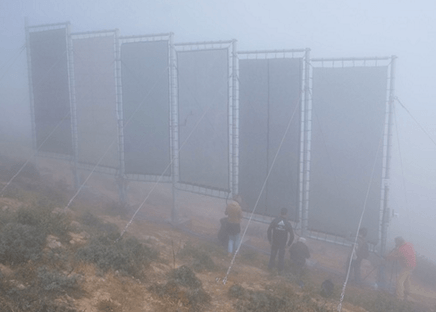

As desertification continues worldwide while the earth’s population continues to increase, more countries are seeking creative solutions to tackle water scarcity. More aquifers are becoming depleted, and desalination is still too expensive of an option for many governments. Hence the search for viable options, an example of which is the United Arab Emirate’s investment in cloud seeding technology.
The extraction of water from air has seen a fair share of startups appear and disappear over the past decade. Arid regions, especially in North Africa and the Middle East, are desperate for answers. But water technologies that are both cost-effective and sustainable in the long-term have not proven themselves to be scalable to meet the growing demand for water.
Could fog-harvesting be an option? While countries with arid climates find themselves parched, they are also blanketed in fog for much of the year.
Such an effort appears to be working in the Ait Baamrane region of southwest Morocco, where a fog-harvesting project launched one year ago is still seen as a success. The system, called CloudFisher by the German company Aqualonis, has several selling points. Perched about 4,000 feet above sea level in the Anti-Atlas mountain range, nets measuring three to six meters tall collect condensation from the thick fog that envelopes these mountains. The nets, which are strong enough to withstand the region’s fierce winds, can be installed quickly with minimal labor, require no energy and need little maintenance. This project’s manager, Dar Si Hmad (DSH), says the 6,460 square feet (600 square meters) of netting and 5 miles (8 km) of pipes and solar-water pumps now provide about 400 people with potable water.
In addition to providing a reliable source of water, this fog-harvesting program has improved the quality of life for locals in other ways. Women, who often spent three to four hours a day collecting water, have had a burden lifted off their shoulders. Girls, who often helped the mothers collect water, can now go to school. Poor farmers can continue to raise livestock they would have had to otherwise sell. And local culture can continue uninterrupted, which means local customs, languages and dialects can survive.
Of course, the project faced some skepticism in the beginning, in part due to infrastructure challenges, but mostly over locals’ doubts whether this water was safe enough for everyday use. A training and trust program helped gain these villagers’ confidence, and now women have a leading role as they have been trained to monitor the system. Many of the systems, in fact, are now monitored with cell phones so they can send SMS messages to the project’s managers in the event something goes wrong with the nets or pipeline.
A similar project launched over 20 years ago in Chile’s Atacama Desert, but it eventually failed largely because of its success. The Canadian NGO FogQuest implemented a system around the mountain of El Tofo for the village of Chungungo in 1992. At its peak, 4,000 gallons (15,000 liters) flowed to Chungungo, reversing migration to large cities while gardens and fruit trees helped transform the village’s appearance and quality of life. But local politicians saw a conventional pipeline or desalination plant as more prestigious than the low-tech fog-harvesting option, so eventually, this system fell apart. That million-dollar alternative never materialized, however. Now Chungungo is receiving water from a local reservoir, which itself is kept full by trucks hauling water over long distances.
While what occurred in Chungungo was a frustrating experience for all parties involved, that project has inspired over 30 others worldwide, from southern Africa to Peru. Many of these fog-harvesting programs are in towns that are relatively isolated and do not have reliable access to potable water. Agencies including the U.S. National Institutes of Health (NIH) and the Organization of American States (OAS) have suggested that fog-harvesting could be a viable option in rural communities lacking the capital to fund massive water infrastructure projects. And the nets used for these projects are far more advanced than a generation ago.
So, while wind turbines will long be a far more common site in the countryside than fog-collecting nets, the success in Morocco could offer new ideas to promote social enterprise and alleviating water scarcity in regions that need such an environmental and economic boost the most.
Image credit: Aqualonis
China Focuses on Climate Action in Latest Five-Year Plan


China’s five-year plans have been a staple of the government since the era of Mao Zedong in the 1950s. These bold and ambitious plans, which lay the groundwork for economic policy, are more than mere posturing by Chinese politicians. Even to this day, the Chinese government exerts massive control through central planning of state-owned industries, public infrastructure and more. China’s government has the power to implement big changes with little opposition.
To outsiders, that sounds like too much power in the hands of the few. However, this could be the best way to make sweeping changes that address climate issues.
The latest five-year plan has an emphasis on environmental issues like none of the other 11 plans before it. While the economy remains the central focus every five years, the 2015-2020 plan sets some lofty goals to lower pollution and improve the environment.
By 2020, China hopes to drastically reduce carbon emissions by almost 18 percent. This issue is a big one, not just for the environment but also for peoples’ quality of life. It’s also not a new issue that China is taking on, as the previous five-year plan made some headway in lessening carbon emissions. In the past decades, massive factories and a reliance on coal have drastically lowered air quality throughout China. A perpetual haze plagues large swaths of the country. The capital, Beijing, is especially hard hit and smog sometimes shuts down the city.
China’s goals over the next five years
In the latest five-year plan, China lays out specific targets. It hopes to limit energy consumption to 5 million tons of standard coal equivalent. The country also, according to the World Resources Institute, wants to lower energy intensity by 15 percent. In other words, it wants to make energy more efficient in the economy.
Specific geographic areas with the worst pollution will be targeted in the new plan. For example, officials hope to reduce airborne particulates in Beijing and Shanghai by 25 percent in the next two years. Funding to control air pollution is scheduled to quadruple, reports Nature.
China is already trimming its state-owned coal firms. This industry was at overcapacity during the global financial crisis as a form of stimulus, but now China is cutting production by 9 percent and reassigning 1.8 million people in the coal and steel industries. These moves have caused some unrest, as the workers aren’t taking the reassignment lightly. While this is not an easy decision, it shows China is serious about improving both the economy and the environment.
The economy vs. the environment
As in previous plans, the economy is front and center for this five-year plan. Government officials are targeting a 6.5 percent annual increase in GDP, which shows that the country is slowing down from years past. This slowdown is alarming to both China and the rest of the world. Economic turmoil in China would send ripples globally. While China weathered the global financial crisis well, it appears to be on a trajectory opposite that of the U.S.
Construction in the U.S. — especially for businesses — is on the rise. In China, similar projects are slowing down.
"We are determined to push ahead with reforms. It will revitalize economic development,” said Li Keqiang, premier of China. “We have to address real problems in sluggish coal and steel sectors."
Climate action and economic growth aren’t an either/or proposition, but it’s possible that environmental goals could be ignored if the economy turns south. In this case, the pressure will be on the government to provide jobs while climate action could take a back seat. Right now, China is taking the possibility of an economic slowdown seriously while still planning to make positive environmental changes.
Hopefully conditions stay strong and China can stay the course on its latest five-year plan.
Image via: Pexels
Starbucks Ramps Up Food Donations Nationwide
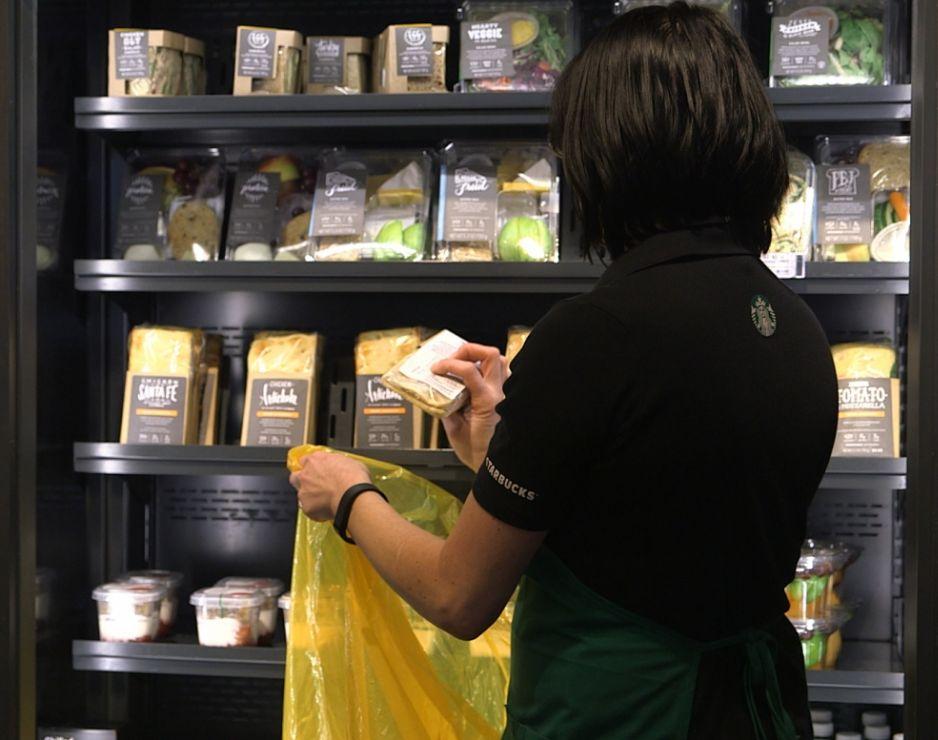

As much as 40 percent of food in the U.S. goes to waste for a variety of reasons: government regulations that hinder stores and restaurants from donating food to homeless shelters or food banks; the desire by stores and restaurants to make food look as presentable as possible; and corporate bureaucracies that often make it impossible for employees to take action and have a voice, even if it is a calling for good.
One company notorious for food waste is Starbucks. The recent acquisitions of fresh juice maker Evolution Fresh and bakery chain La Boulange allowed the company to upgrade its menu offerings, many of which end up in the trash at the end of a workday.
The company, despite its pledges to improve on this front, has long struggled with waste diversion and recycling. Starbucks touts its recycling efforts, for example, but that effort ends when baristas take out the trash -- if the property management company at which a store is located separates its waste or takes part in a co-mingled recycling program, Starbucks can take credit. If it all goes to a landfill, well, it is out of the company’s hands.
The same goes for food waste: Those fancy breakfast sandwiches and pastries are individually wrapped in plastic, so if they don’t sell by their expiration dates, no one obviously is going to go through the trouble of composting them even if such an option existed. If employees take unwanted or expired food products home, give them to friends or family, or take them to a local food bank or homeless shelter on their own volition, they are lucky if they only get a slap on the wrist. In fairness to Starbucks, however, the liability culture rampant in the U.S. and regulations covering the distribution of fresh food get in the way of doing good — even though the stubborn truth is that the fuss over expiration dates, for the most part, is way too hyper-cautious. In the meantime, as many as 17.5 million American households are at risk from food insecurity, according to the NGO WorldHunger.org.
But Starbucks is making a change. As announced in a recent press release, the company is working with two nonprofits to do something with those unwanted turkey, bacon and egg sandwiches, protein boxes, and focaccia melts. Feeding America, a network of food banks that spans the U.S., and Food Donation Connection (FDC), an NGO that partners with food-service companies to find alternatives to discarding food, will work with Starbucks on a quest to make 100 percent of Starbucks’ food available for local donations within five years.
During this first year, Starbucks says it will be able to provide 5 million meals nationwide. By 2021, that number, if all goes according to plan, should surge to 21 million annually. That would mean all of Starbuck’s 7,600 U.S. locations, including those in supermarkets or retail chains such as Target, will need to buy into this program.
Starbucks follows the lead of other fast-casual and restaurant chains that donate food to local nonprofits. Panera Bread, for example, has long donated unsold bread and other baked goods to local charities. Darden Restaurants, which operates chains like Olive Garden and Longhorn Steakhouse, donates surplus food to nonprofits including FDC. And Chipotle offers unneeded grills and food processors to local charities and schools that can use them in their kitchens.
Far too much food still ends up in landfill, but Starbucks’ efforts sends a message to other food companies that they cannot pass the buck — creativity goes a long way to solving the related problems of food waste and hunger.
Image credit: Starbucks
Coming to an Embattled Community Near You: Gas Companies With Chainsaws?


By Josh Fox
There’s a battle raging for America’s energy future. The fracking industry is flexing its political muscle in a bid to become profitable again, pushing new, unneeded fracked gas-fired power plants like the huge CPV power plant proposed for Middletown, New York, two massive gas fired power plants for Denton, Texas, and about 300 others nationwide.
It’s also pushing for thousands of miles of new proposed fracked-gas pipelines to service them, like the NED pipeline through New England, the Millennium Pipeline expansion in Pennsylvania, the Tennessee pipeline in West Virginia, and related infrastructure including the gas storage facility at Seneca Lake, New York.
The push is happening because the fracking boom, much like the wildcatting days of old, was unplanned and reckless. It over-produced, then went bust. Gas supply exceeded demand, so prices and production tanked. That made gas companies desperate to get their supply glut shipped to new markets. Hence the need for new pipelines to transport it, new compressor stations to push it along, and LNG terminals to export it, which would mean new demand, and new fracking boom.
So, new pipeline proposals are everywhere, and fracking and pipeline companies are using the Federal Energy Regulatory Commission and eminent domain to strong-arm residents and condemn private property in their way. If you’ve seen "There Will Be Blood," you get the picture.
In Pennsylvania, land taking and pre-emptive, hostile tree-cutting has already happened along the route of the proposed Constitution Pipeline, even though it hasn't been approved and faces considerable citizen opposition in New York. The 124-mile project has been proposed to transport fracked gas from Pennsylvania’s Marcellus Shale through New York state to a compressor station outside of Albany, which connects to other pipelines servicing New York and New England, and if the industry gets its way, to export facilities.
The pipeline companies, Cabot Oil & Gas and Williams, also wanted to fell a whopping 700,000 trees in New York to prepare for construction, but New York residents fought and delayed tree-cutting and construction at least until 2017. That forced the companies to admit they can’t move forward on the pipeline without permits New York state has yet to grant.
The admission comes late for Pennsylvania residents. In recent weeks chainsaw crews needlessly cut down thousands of trees in the pipeline’s path, including stands of sugar maples that were the livelihood of a family farm. Property owners and activists who objected were charged with contempt, hauled into federal court and warned by the judge not to interfere – all for a project that hasn’t been approved in New York and may never get built.
Serious questions about the Constitution Pipeline’s impact on New York’s water quality and other issues are under review at New York’s Department of Environmental Conservation. The DEC and other state agencies have the power and reserve the right to say “no.”
There’s an obvious moral issue here: New York state banned fracking. New York Health Commissioner Howard Zucker stated in 2014 that fracking posed “significant public health risks.” But if fracking is unhealthy for New Yorkers, it’s unhealthy for anybody. Don’t kids on both sides of the Pennsylvania/New York border deserve the same health protections? Why permit a fracked gas superhighway through New York that would engender thousands of new fracking wells in neighboring states?
New York has so far withheld needed permits for the pipeline, but that hasn't stopped FERC from using eminent domain to take Pennsylvania residents’ land in the pipeline’s path, and authorizing pipeline crews to cut down 100,000 of their trees. It’s as if they’re saying, the fix is in: State permits are just a rubber stamp anyway, so why bother waiting for them to be granted?
The Holleran family, owners of a maple syrup farm in New Milford, Pennsylvania, set up a blockade to stop the pipeline crews from destroying their sugar maples. They were joined by scores of activists, and for weeks they kept watch over their trees, occupied their own land and asked tree-cutting crews to leave. On Feb. 19, they had to answer charges of contempt in federal court for it. The judge dismissed the charges, but he granted the police and U.S. marshals permission to arrest anyone trying to stop the workers from cutting down trees. On March 1, crews guarded by heavily-armed marshals took down the Holleran’s trees.
That could become standard procedure across the country. The Hollerans fought for their home, livelihoods and rights, and they lost. But they and those standing with them are also fighting for the planet.
Fracked-gas infrastructure doesn’t just threaten residents and local communities; it threatens the global climate. Methane, the primary component of shale gas, is 86 times more potent a greenhouse gas over 20 years than carbon dioxide. The onshore natural gas industry leaks well over 400,000 tons of methane, more than four times the emissions from the recent Porter Ranch disaster, each year. Research by Cornell University’s Robert Howarth shows that production, distribution and burning of shale gas actually produces more greenhouse gases than coal or oil.
The Paris climate agreement set ambitious goals for limiting global warming to 2 degrees Celsius or lower, and fed the perception that natural gas is a ‘bridge fuel’ that would lower emissions while transitioning to low-carbon energy. But natural gas is no bridge; it takes us over a cliff. If the Constitution Pipeline and the rest of the pending fracking infrastructure projects get built, they will lock us into 40 more years of high-GHG fossil fuel use, and shatter any chance of limiting global warming to 2 degrees Celsius.
We’ve got alternatives, and communities must deploy them before it’s too late. Places like the Hollerans’ farm are the front lines of that fight. That’s why I’ve made a new film, “How To Let Go of the World (and Love All the Things Climate Can’t Change),” about the power of local communities to reject exploitation by the oil and gas industry, and to pull together to determine their own climate and energy solutions. Here’s the trailer.
We’re taking it on a 100-city Let Go and Love Tour to communities across the U.S. that are fighting fossil-fuel infrastructure projects. Tour events screen the film and offer information and practical resources for communities to build clean-energy alternatives, connecting them to engineering, legal and regulatory, and finance expertise they need to make renewables a reality.
Whether you live in the path of the mad dash to build out fracked gas infrastructure – and millions of us do – or you just want a habitable planet to live on, we’re all deeply invested in how this struggle plays out. It’s a race against time: We have to bring embattled communities the resources and know-how they need to build the clean-energy future they want, before the gas companies bring the chainsaws.
Editor's Note: Josh Fox and others from the activist group Beyond Extreme Energy were arrested on Thursday during the Pancakes Not Pipelines protest in Washington, D.C. The demonstration served pancakes while protesting fossil-fuel projects such as the pipeline that cost the Holleran family their maple sugar farm.
Images courtesy of the author
Academy-award nominated filmmaker Josh Fox is artistic director of the International WOW Company. His 2010 film GASLAND galvanized the anti-fracking movement, and his new film "How to Let Go of the World and Love All the Things Climate Can't Change" airs on HBO June 27.